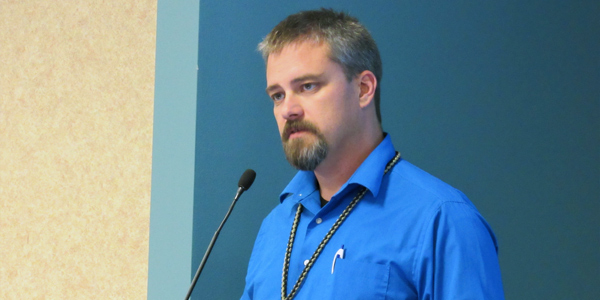By Amanda Durish Cook
CARMEL, Ind. — MISO officials said a temperature forecast short by just 3 degrees Fahrenheit triggered a maximum generation event Sept. 22.
Tim Aliff, MISO director of interconnection and planning, said that if the RTO misjudges its temperature forecast by even 1 degree, it either underestimates or overshoots its load forecasts by about 1 GW. On Sept. 22, it expected the footprint to top out at 89 F, instead of the actual high of 92 F, he said.
“That can be a big impact from a load perspective. Those 3 degrees might not feel like much outside, but it caused us to be off by about 4 GW,” Aliff said during an Oct. 12 Market Subcommittee meeting.
“Ninety degrees in September isn’t all that odd, but 90 degrees in late September is odd,” he added.
MISO emergency conditions Sept. 21-25 were the result of a combination of record temperatures, high load, and seasonal and forced generation outages. (See MISO Capacity Easily Exceeds Predicted Winter Peak.)
On the day of the maximum generation event, MISO had 4.6 GW of stranded capacity due to forced and planned outages and derates. Additionally, 1.1 GW of generation tripped offline suddenly. Aliff pointed out that during the emergency conditions, MISO South was still recovering from the impacts of Hurricane Harvey.
“It’s kind of unusual on a Saturday to get into a max generation situation,” Aliff said of Sept. 23, which also fell under the maximum generation warning. “Shoulder months can be challenging, so we continue to review what we need to do to reduce these challenges, if you will.”
Michigan Public Service Commission staffer Bonnie Janssen pointed out that by late September, school is in session, which contributes to load.
Xcel Energy’s Kari Clark asked whether MISO could make transmission constraints more visible to market participants during emergency conditions so generators can better understand if their megawatts are unlikely to be able to aid an emergency.
“If we know that we could help you, that would be helpful in our processes,” Clark said.
Aliff said Clark’s suggestion was useful and that he would take it back to his team.
Minnesota Public Utilities Commission staff member Hwikwon Ham asked if MISO has identified a possible transmission solution that would have moderated the situation. Aliff responded that it had not investigated but could look into it.
The September emergency marks MISO’s second maximum generation event of the year. On April 4, MISO called up load-modifying resources for the first time in 10 years in the face of a similar blend of unseasonably high loads coupled with a large number of generation and transmission outages. (See “Several Factors in Spring MISO South Maximum Generation Event,” MISO Market Subcommittee Briefs.) MISO did not have to shed load during the September emergency.




